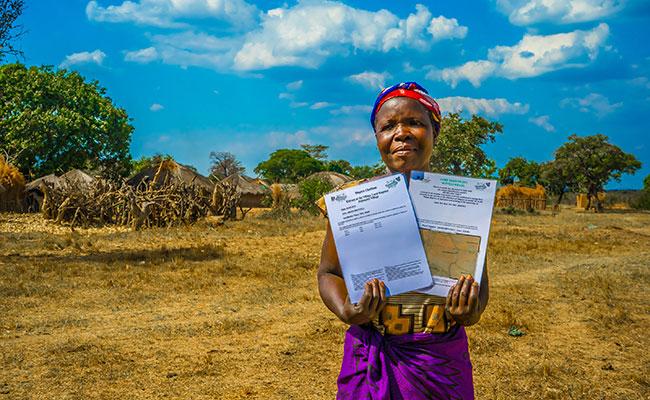The Role of Land Rights Documentation in Promoting Sustainable Land Use Practices
Talking with Tetra Tech’s Dr. Matt Sommerville about the Tenure and Global Climate Change Project

Innovations in Development: Solutions for a better future
Tetra Tech’s Dr. Matt Sommerville, senior associate with Tetra Tech International Development Services, participated in a U.S. Agency for International Development (USAID) LandLinks expert interview that highlights the innovative approaches used for customary land documentation in Zambia and ways the Tenure and Global Climate Change (TGCC) project institutionalized land reform at the local, regional, and national levels. All opinions expressed in this post are the author’s own.
In the interview, Matt recaps his experience as Chief of Party for TGCC and his time in Zambia examining the influence of land rights documentation. Matt discusses how the project successfully championed a land certification process that resulted in the documentation of more than 15,000 parcels of land across five chiefdoms in Zambia’s Eastern Province. In addition, Matt notes lessons learned and the benefits of land documentation to resolve long-standing disputes and build trust and partnerships throughout local communities.
From the LandLinks interview:
USAID began supporting customary land documentation in Zambia to test a simple question: Does the documentation of land rights influence farmers’ decision to adopt sustainable farming practices? The intervention was designed as a randomized control trial impact evaluation, and included almost three hundred villages that were split between four treatment groups: one that participated in a land-tenure-strengthening intervention; a second that participated in an agroforestry intervention; a third that participated in both land tenure and agroforestry interventions; and a control group.
As TGCC began to work with local chiefs, it became apparent that there was national interest across Zambia—from chiefs, civil society, and the Ministry of Lands—in low-cost, mobile technology-based, robust processes to document the land rights of Zambia’s millions of landholders. With the Urban and Regional Planning Act of 2015 and the Forest Act of 2015, new opportunities emerged for coordination between state and customary leaders on land use planning and resource management. Based on this, USAID began supporting civil society partners to undertake land documentation at scale. In addition, we worked across interest groups to build communication and transparency between chiefs, communities, and government ministries to improve land and resource management.
[…]
TGCC’s support to the Petauke and Chipata District Land Alliances, local civil society organizations, has demonstrated the ability of civil society organizations to play an active role in delivering land-administration services, acting as an honest broker between chiefs, communities, and the district government. Through this work, the two district land alliances have mapped more than 15,000 land parcels and documented individuals with ownership and other interest rights in that land. Nearly half of the parcels have a female landholder associated with the parcel, representing equal rights of ownership over the land.
To learn more about the TGCC project’s innovative approach to land titling in Zambia, read the full interview on LandLinks blog.

